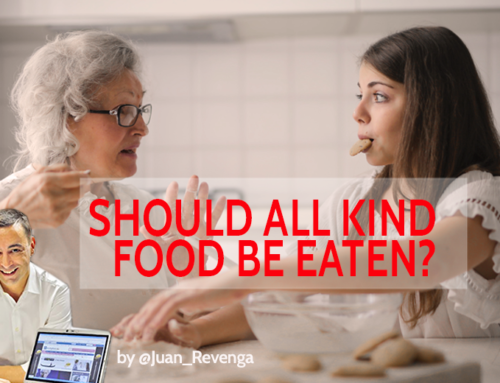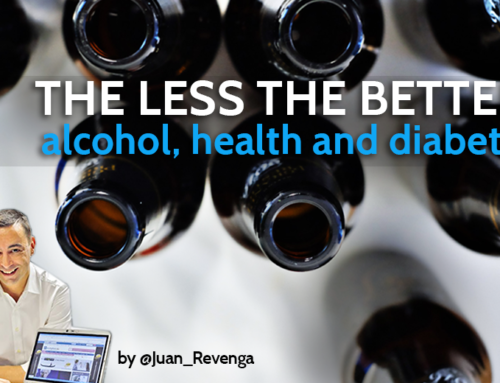Diabetes and COVID-19: a particularly at-risk group and some tips
While the risk of being infected with coronavirus is the same for everyone, the consequences for people with diabetes could be much more severe
The British Diabetes Association (Diabetes UK) one of the most highly regarded institutions in the world’s diabetes field, sustains that anyone with diabetes, whether type 1, type 2 or gestational, is at risk of developing a serious disease if they catch the infection, although in the end the way in which each patient may be affected will vary from person to person… so how does anyone else? Well, no, like anyone who doesn’t have diabetes, no.
Everything points to the fact that the group of people with diabetes seems to be particularly sensitive, not so much because of the probability of being affected by the coronavirus infection, but probably because of suffering greater complications once infected. And even for having a significantly higher probability of death in relation to the general population without diabetes. Or at least that seems to be the case from the epidemiological data of a disease with which we have only been living for 4 months.
Still a theory, but it could be feasible
A very recent publication in The Lancet on the most common comorbidities of people who have died in China from COVID-19 echoes three studies conducted to date:
- The first, in a group of 52 patients admitted to intensive care units, 22% of them had diabetes.
- The second, out of a total of 1099 patients with confirmed disease, of which 173 had more severe symptoms, 16.2% had diabetes mellitus.
- The third, of 140 patients admitted to hospital with COVID-19, 12% had diabetes.

In addition to the theoretical problems, other more real ones
The fact is that patients with diabetes face two particularly complicated scenarios when faced with COVID-19. Both refer to the increasing difficulty in controlling blood glucose, the first only in the case of people with diabetes who have been infected, and the second, which will affect all patients, derives from the situation of universal confinement to which the entire population is subject.
In the case of infection by COVID-19 -or by any origin- one of the responses to situations of metabolic stress consists of an increased release of glucose into the bloodstream. The added problem in cases of diabetes is that, as is easily predicted, this increase in blood glucose will not be managed in the same way as in non-diabetic patients, and will lead to a sustained increase in blood glucose values. The British Diabetes Association explains in this link how to manage diabetes when you are sick in any circumstance.
In relation to the confinement situation, we cannot forget that in most cases this will mean a reduction in the possibilities of being active. Let us not forget that physical activity is one of the most powerful tools with which to face both the risk of suffering from diabetes, and the same once it has been diagnosed.
Staying active without leaving home, which is a new situation (as it is for most of the diabetic population or not) is a challenge. However, we have consulted with Jorge Garcia Bastida, a physical trainer, who has offered us some alternatives for more basic levels:
STRETCHES:
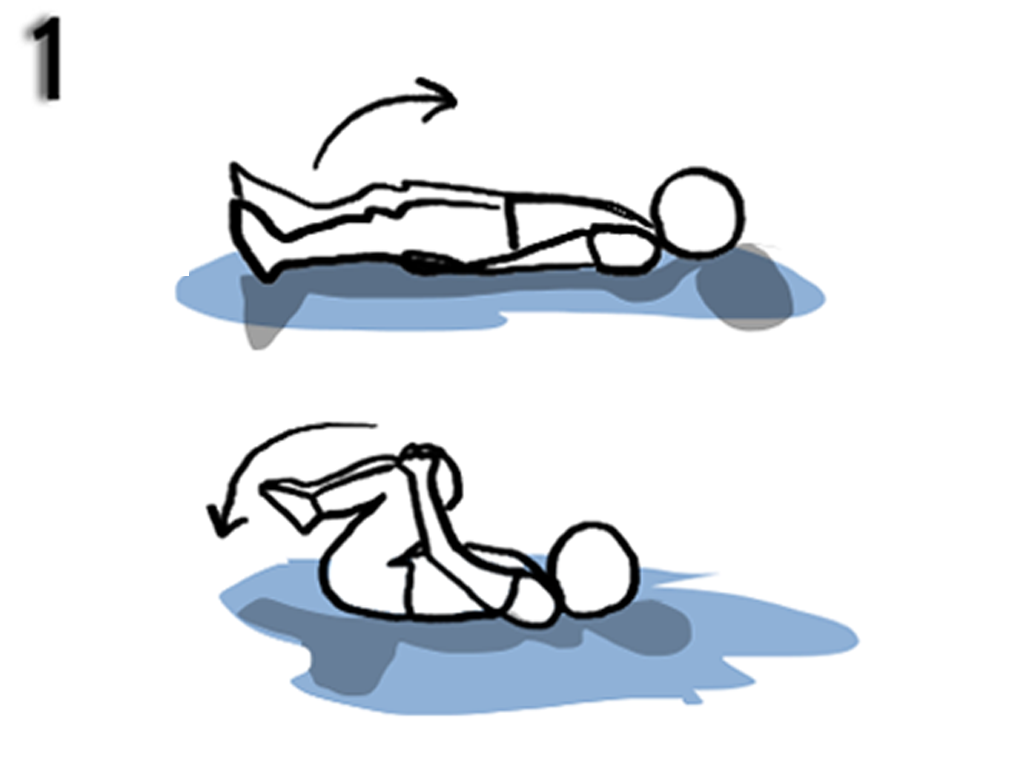
Lying on the ground:
1.Face up, hug both legs, take air through our nose, for 5 seconds, and release it through the mouth for another 5 seconds. Repeat 5 times (PHOTOS).
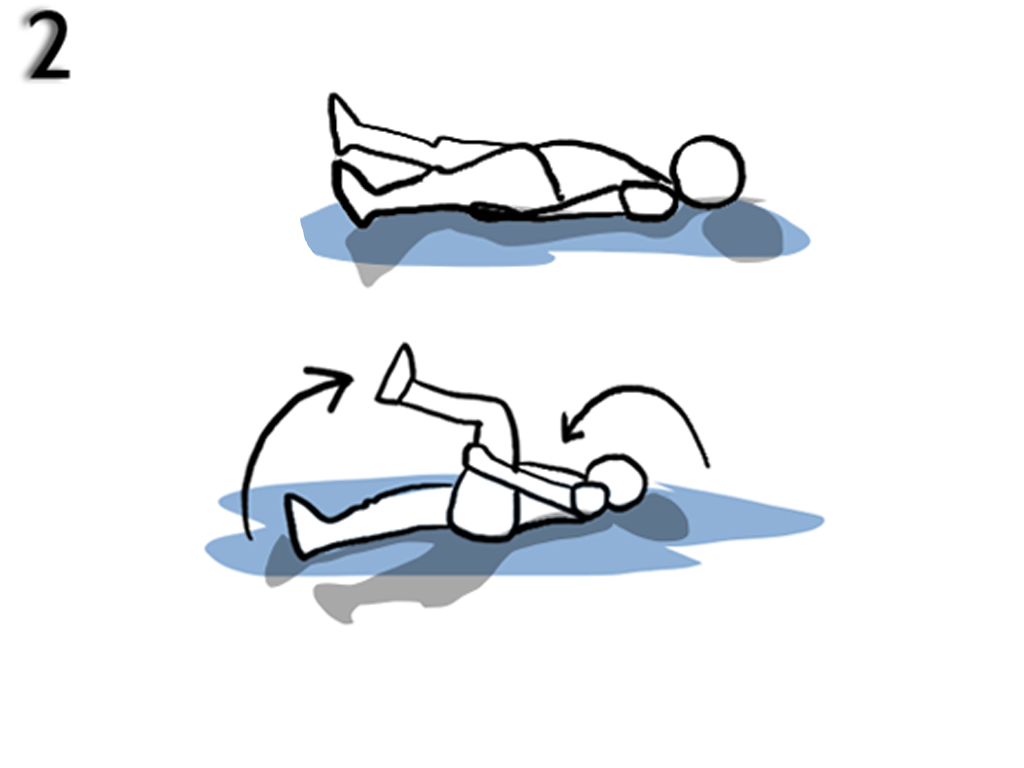
2. Face up and keeping one leg on the floor, raise the other leg, holding it with hands at the back of the thigh, until we notice a stretch (without pain) at the back of the thigh. Take air through the nose, for 3 seconds, release it through the mouth for another 3 seconds, we lower the leg. Repeat the process with the other leg WATCH VIDEO.
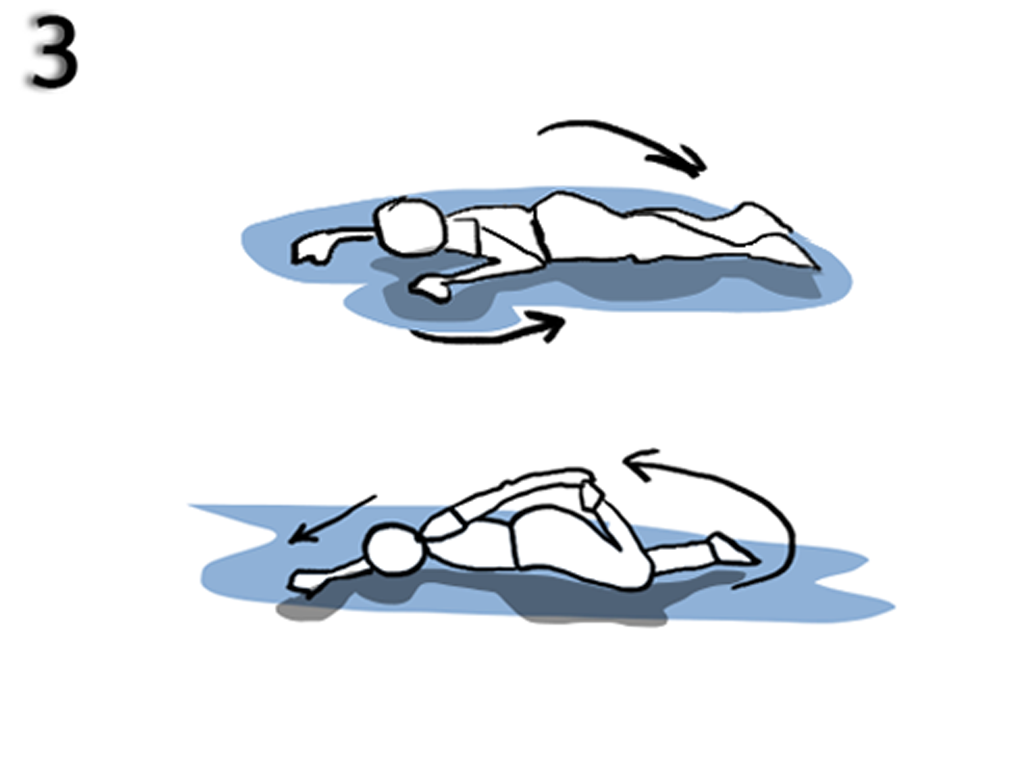
3. Lying on your side, bring the heel of your upper leg towards your buttock (it is important that your back does not arch), holding your foot, until you notice that the front of your thigh is stretched (the quadriceps and hip flexors). Take air through the nose, for 3 seconds, release it through the mouth for another 3 seconds. Lay on the other side and perform the same process with the other leg (link).
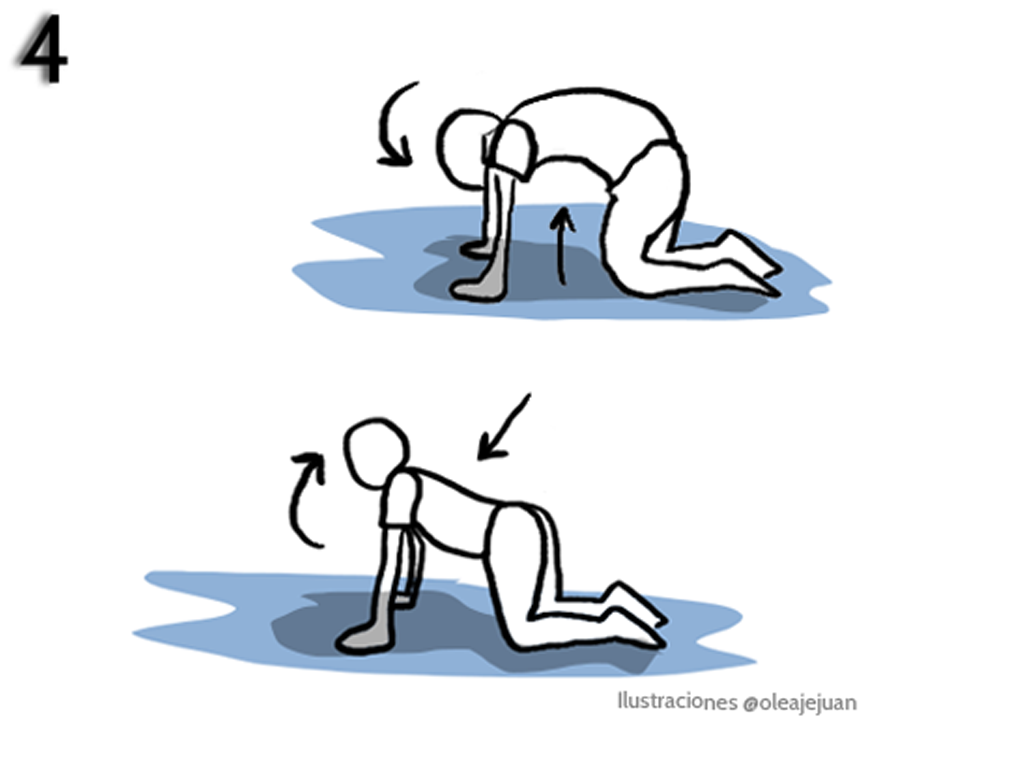
On all fours:
4. Rest our hands, knees and feet on the floor (on a soft surface, such as a mat or cushion). From there, raise the back up, taking air through the nose for 3 seconds, and lower the back down to its extension, releasing the air for 3 seconds through the mouth. (This exercise is known as “cat-camel”) WATCH VIDEO.
STRENGTH AND ENDURANCE EXERCISES
The circuit is composed of 4 exercises that will alternate in the order indicated and will be repeated 5 times.
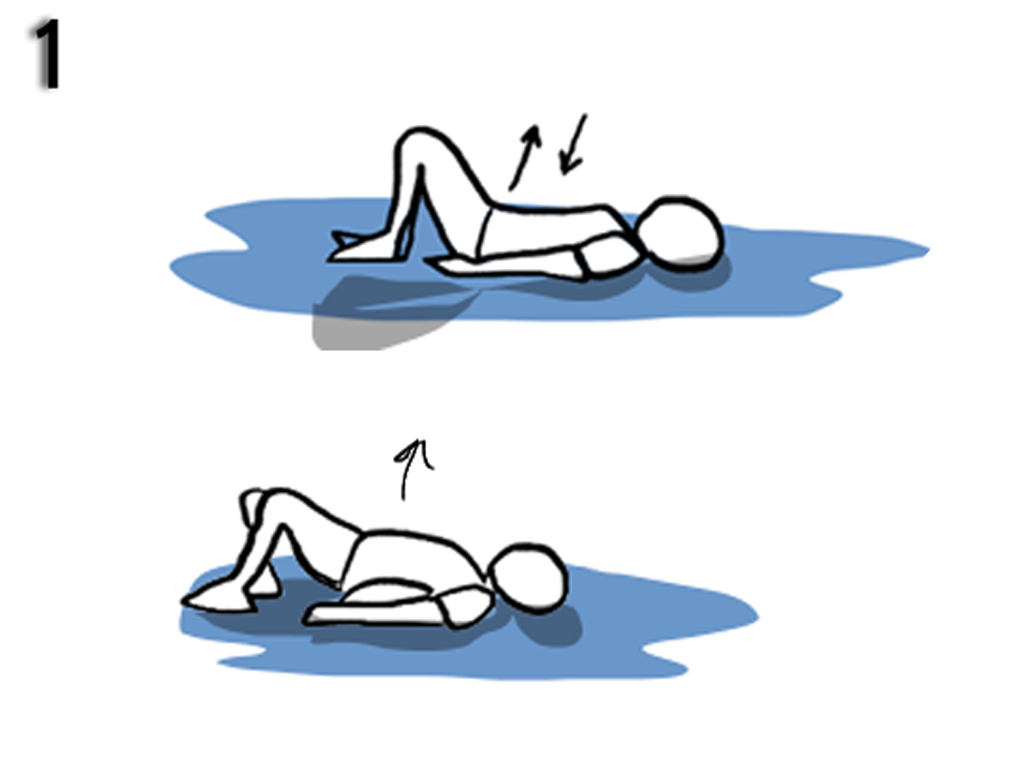
Lying on the floor:
1 Bend knees 90 degrees, and leaning our hands and the soles of feet on the ground, exert force on the ground, raising hips from the ground (back should remain neutral, without movement) with a controlled movement for 2-3 seconds, and lowering them for 2-3 seconds. Repeat 8 times WATCH VIDEO.

2. In the same position as above, but with the hands pointing to the ceiling, raise one leg until it reaches 90 degrees (the back should remain neutral, without movement) with a controlled movement for 2-3 seconds, and lower it for 2-3 seconds. Repeat 8 times WATCH VIDEO.
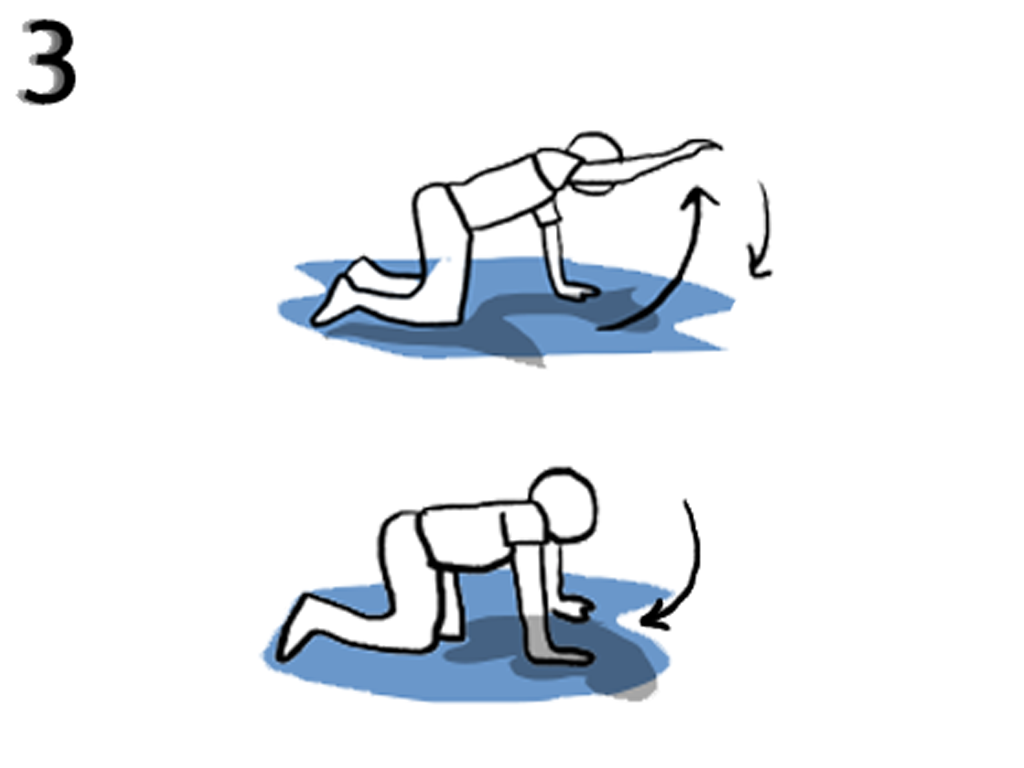
On all fours:
3. Rest our hands, knees and feet on the floor (on a soft surface, such as a mat or cushion). From there, raise one arm, forward until it is in line with the trunk, with a controlled movement for 2-3 seconds, and lower it for 2-3 seconds. Repeat 8 times for each arm WATCH VIDEO.
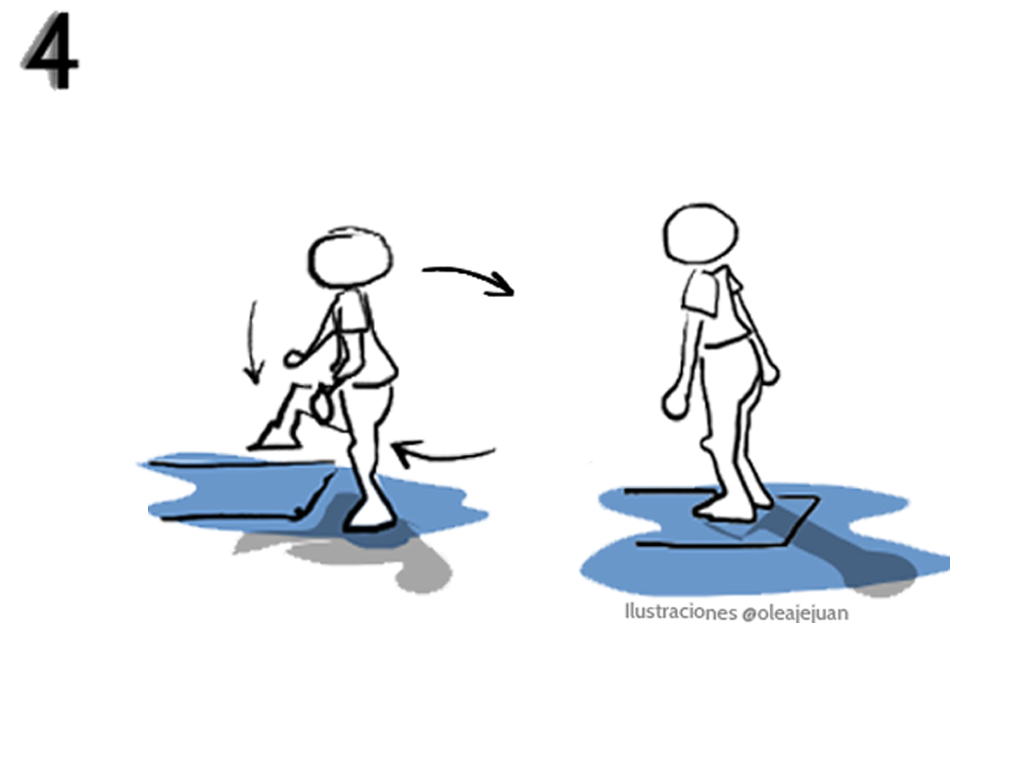
Stand:
4. We place ourselves in front of a low step (or in its absence the carpet edge to serve as a guide) and we must climb to the step (or the carpet) taking a step with one foot, and then a step with the other foot. In a continuous way, we leave the carpet, taking a step backwards with one foot, and then with the other foot. So we go in and out of the carpet for 1 minute. The pace should be similar to that of a brisk walk. Every week, you can increase the time of execution by 30”. WATCH VIDEO
In addition, the NHS, the British National Health Service, provides a number of interesting resources for doing different types of exercise, especially when you do not have a gym or cannot leave your home.
Nutritional advice
A few weeks ago the Spanish Academy of Nutrition and Dietetics issued a position paper “Dietary recommendations in the face of infection and in the case of mild patients”, in which seven key messages were developed from a main generic idea: “The dietary recommendations for COVID-19 are identical to those addressed and have always been addressed to the general population in a normal situation”.
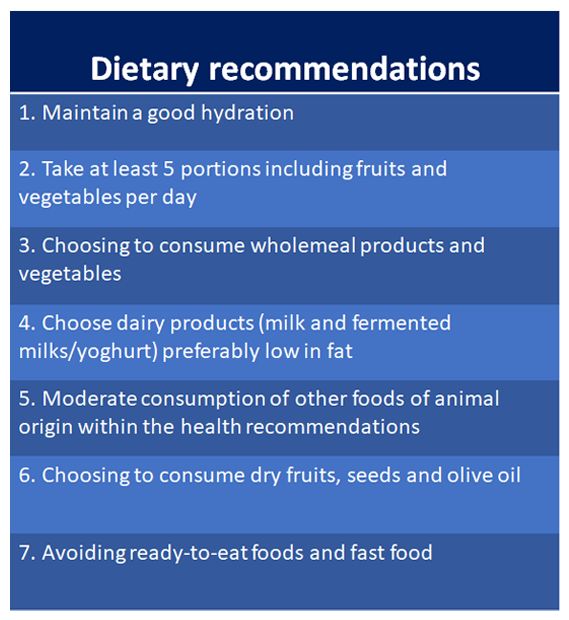
Latest posts by Juan Revenga Frauca (see all)
- Obesity recognized as a chronic disease - 13 October, 2021
- Who said you have to eat everything? - 7 October, 2021
- Diabetes and Alzheimer - 29 January, 2021





